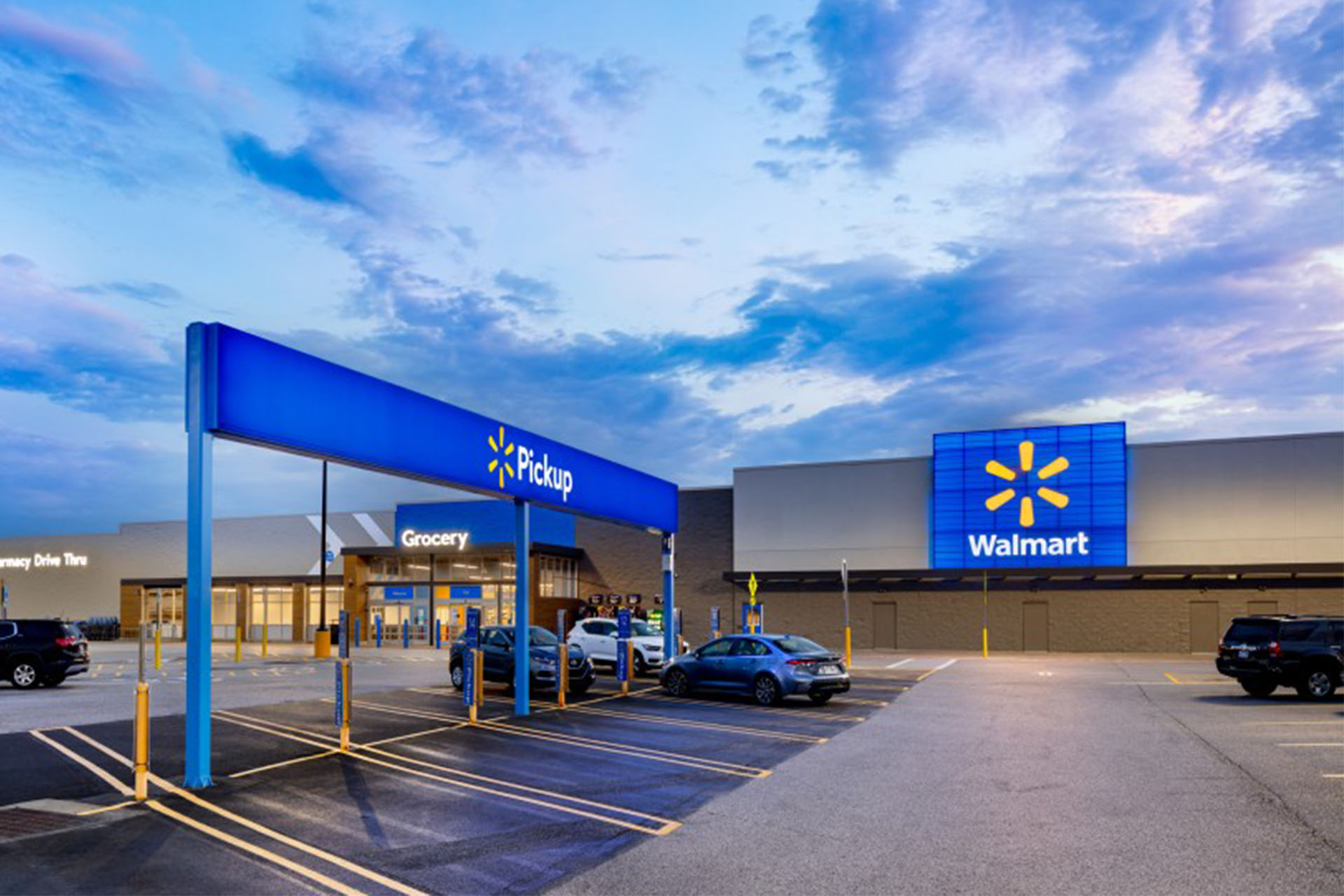Although the course of its omnichannel development wasn’t always smooth, Walmart stands on the brink of a significant revolution.
The retailing giant is poised to bring together a range of dynamics and functions into a greater harmony internally as the company aligns operations and externally in outreach across stores, websites, apps and social media using technology to engage consumers no matter where they choose to shop and, in the case of its media initiatives, even when they’re not shopping.
At the upcoming Walmart Annual Meeting, the well-known extravaganza that combines pep rally and insight about where management intends to take the company in the immediate future, discussion of how the company will expedite that evolution is likely to be a significant topic.
In recent communications, Walmart, particularly through its president and CEO Doug McMillon and other executives, as well, has begun laying out its direction for the future. “That future is an omnichannel one where we simultaneously strengthen our stores and clubs and build a more compelling e-commerce business,” McMillan said during the company’s fourth-quarter conference call.

Doug McMillon, CEO, Walmart
Walmart isn’t simply running a business through which consumers can shop in stores and online. It is business layered and increasingly aligned to offer consumers multiple propositions when they need to make a purchase based on personal preference and the needs of any given occasion. It is building on its core strength in its store network but integrating the latest technology to make it easier and more pleasant for consumers to engage with the company on their own terms.
Still, physical stores aren’t the only advantage enjoyed by Walmart. The company has built its success on a long series of failures. The shift to becoming a fully unified omnichannel operation mirrors its development of the now core supercenter operation in that things didn’t always go smoothly. Yet, Walmart was willing to adapt and even walk away from businesses that didn’t advance the overall and core businesses, as it has defined them over the years while learning from its involvement.
Today, Walmart trails Amazon substantially in the e-commerce component of the omnichannel operation, but it dominates in brick and mortar, a part of the business with which Amazon has struggled. It is interesting to consider that Amazon was beginning to build out its e-commerce business when Walmart was developing and expanding its supercenter business and, simultaneously, becoming a truly national retailer in the United States.
Lessons Learned
Walmart has a history of developing new operations based on trends in the retail industry and analysis of formats the company believes provide opportunities it could use its strength in distribution and the mass market to exploit. During the late 1980s, Walmart developed a hypermarket concept at a time when that format, developed in Europe, seemed destined to spread in the United States. The hypermarket didn’t turn out to be as successful as Walmart hoped, and the company closed down the concept in favor of its recently developed supercenters. In fairness, however, major European hypermarket operators Carrefour and Auchon entered and withdrew from the U.S. at the same time Walmart was developing and expanding supercenter operations.
Still, the hypermarket format had its virtues, as far as Walmart is concerned.
Scott Benedict of consultancy McMillan Doolittle said Walmart’s willingness to try things and, at least on the surface, fail is important to the company’s success and ability to move forward in today’s retail marketplace. When the company discovered the hypermarket format wasn’t going to work for it, Walmart was inclined to just forget about it.
“I can tell you that, internally, it’s not viewed as a failure but as the foundation on which the supercenter concept was built,” Benedict said. “That’s the mindset of we’re going to try things within the scope of what we can invest and test and try without risking the core business.”
Beyond that, Walmart applied lessons learned in establishing hypermarkets, then developing the supercenter, and later fine-tuning by working in a supermarket and acquiring McLane. Similarly, Benedict said, Walmart looked at what Sol Price was doing at Price Club and began to consider how a warehouse operation could help it build its suburban and urban business at a time when its namesake stores had only proven a widespread success in rural areas.
As Walmart was adapting its retail and distribution systems and Amazon was doing the same thing with e-commerce, Benedict pointed out, it’s hardly surprising that Walmart focused corporate resources on digital operations. In some ways, he said, Walmart’s view of e-commerce, which initially was not a proven concept, was tentative to the degree the retailer separated online operations from brick and mortar as it tried to develop its own way of conducting a digital business.
During the period when it was just expanding its supercenter format in the early 1990s, Walmart acquired an Arkansas supermarket chain, which helped it learn about the finer points of food retailing and test certain ideas. Although it took a few years to work out, Walmart was able to develop its food and general merchandise combination effectively enough to make it the main concept that the retailer would pursue.

Walmart customer shopping in store
Yet, Walmart’s supercenter concept was inspired by existing stores, especially under the Schwegmann’s banner, operating in and around New Orleans and including Grand Rapids, MI-based Meijer. In 1990, Walmart acquired McLane Co., which had earned recognition for its distribution systems, particularly smaller deliveries to convenience stores. Although it sold McLane in 2003 to Berkshire Hathaway, Walmart maintained a business relationship with the company. In 2017, McLane announced the renewal of its service agreement with Walmart. So, it continues to deliver to Walmart stores across the U.S., becoming the sole provider of candy and tobacco products to the majority of the company’s retail locations.
Walmart took a while to settle into the food retailing business but has become the largest grocery seller in the U.S., as it remains. Estimates differ, but even if the top supermarkets, The Kroger Co. and Albertsons Cos., merge as they plan, Walmart would remain the leading grocer. In fact, eMarketer notes that in online grocery, Walmart not only leads Amazon but is also pulling further ahead. Amazon led until 2019, eMarketer stated, but in that year, Walmart came in at $17 billion to Amazon’s $16 billion, respectively. In 2024, eMarketer estimates Walmart will do $58.92 billion versus Amazon’s $40.5 billion.
In part, Walmart’s strength has been its ability to deliver to the consumer as the consumer sees fit and dramatically expanded the store’s role in e-grocery operations in its own case and for the entire retail industry. Walmart was fortunate, to an extent, because it was substantially expanding in-store and curbside pickup as the COVID-19 pandemic hit and had real advantages as that service became more vital.
Of course, pickup wasn’t a new idea. However, Walmart developed its own specific approach, building out its store and curbside pickup program with an identified customer-centric goal to save its core customer, a woman with children, the two hours a week she would spend on her main shopping trip so she had more free time with her family. If fate lent a hand, the experience Walmart accrued and its ability to innovate in grocery based on that experience put it in as strong a position as it occupied when the pandemic struck. What wasn’t luck was the experience Walmart developed as it shifted to supercenter operations, learned the grocery business and tried new ways to approach it. So, when COVID struck, Walmart was in a better position to respond than most of the competition.
And omnichannel clearly played a key role in that response.
Omnichannel Gains
If Walmart has advanced its omnichannel operations with some fits and starts, the company has consistently taken lessons from its experiences, as it did in grocery, and figured out how to make them work within its capabilities. Walmart has experimented with a variety of approaches to online operations while continuing to develop its core business. It has tried assembling a portfolio of specialty operations, including e-tailers such as Jet and Bonobo, before spinning it off, as well as innovative ideas such as text-based JetBlack. Walmart continues building on lessons learned, including continued experimenting with text-based ordering.
In straight-up terms, while large, Walmart’s e-commerce business isn’t on a level with Amazon’s digital operation. In 2023, according to market researcher Statista, Walmart had the second-highest e-commerce market share in the U.S. at 6.4%. Although still far behind Amazon, which had a 37.6% share, the Walmart figure was well above third place, Apple at 3.6%, fourth place eBay at, 3%, and fifth place Target at 1.9%.
In a somewhat different statistical approach, Insider Intelligence looked at Amazon and Walmart’s 2023 e-commerce market shares, putting them at 37.6% versus 5.9%. However, in that analysis, Amazon’s market share peaked at 38% in 2021 versus Walmart’s 5.6%.
A Reshaping
In his annual letter to shareholders and employees, McMillon said Walmart is reshaping its digital business model. The company is combining a traditional retail P&L with a newer P&L consideration that involves e-commerce for its own operation inventory and the third-party sellers on the company’s marketplace segment, as well as membership, advertising, fulfillment as-a-service and data monetization as elements in a larger approach to evaluating the business.
Walmart looks to continue strengthening its physical component in the United States by remodeling 650 namesake stores and Sam’s Clubs. The immediate focus is on building 30 new Sam’s Clubs during the next several years while adding more than 150 Walmart Supercenters and Neighborhood Markets.
The application of technology to online and in-store locations is the key to what Walmart intends to accomplish. In terms of shopper engagement, Walmart plans to create new customer experiences using data to set the course and automation in the physical and digital world to make them work. It is incorporating innovations such as generative AI, computer vision and automated systems in the supply chain to get products consumers want to them in a more precisely calibrated fashion. Then, in the customer-facing case, Walmart has kicked off a GenAI-driven product search, in one example, allowing customers to shop more intuitively.
Walmart is already seeing positive results from its efforts. In his letter to shareholders, McMillon said the company’s customer experience scores usually dip during high-volume hours and days in the holiday season. However, during the fourth quarter of the recently completed fiscal year, the Walmart U.S. team delivered three-year high customer scores for its stores, pickup and delivery from stores, and orders that flowed directly from the company’s e-commerce fulfillment centers.
“I’m excited about the omnichannel Net Promoter Score trends the team is driving,” McMillon said.
Today, Amazon is the dominant e-tailer, but Walmart remains the largest retailer overall. The development of the two left Amazon with particular advantages that Walmart couldn’t readily match. However, when looking at its position vis a vie Amazon, Walmart was mulling over its own strengths and the advantages those could provide in accelerating its digital growth.
“The lightbulb for (Walmart) was, we have something that Amazon doesn’t have,” Benedict said. “We have a physical presence within striking distance of 90% of the U.S. population.”
As it began expanding online orders and pickup, including curbside, Walmart had experience gained in the United States and beyond, as was the case with store pickup. Walmart operated ASDA in the United Kingdom before spinning it off in 2021, part of an international story that’s beyond the present scope, as is the company’s development of fintech and other finance initiatives. For its part, ASDA did a lot of pickup business.

Walmart customer picking up online order
“ASDA, when it was still part of Walmart, was having a lot of success with that in the U.K.,” Benedict said. “Then, Walmart looked at its own fleet of stores and said maybe we can use that at a competitive advantage. Amazon built out all these fulfillment centers and lost money for years while they were building out.”
Walmart looked at Amazon’s activity in fulfillment centers and decided it needed to build more such centers while leveraging all its points of distribution in stores and clubs, where shoppers can order something in the morning and pick it up that afternoon, Benedict added, Converting existing retail locations into distribution points was less expensive than building logistical facilities from scratch.
“So instead of trying to out Amazon Amazon, they became a better version of Walmart,” Benedict said.
By now, Walmart is looking at Amazon and the additional revenue streams it has developed in marketplace, membership, entertainment and business-to-business services. Yet, Walmart isn’t looking to imitate as much as repurpose, having recognized where the company’s strengths lie in the omnichannel dimension. Walmart, for example, looked at marketplace operations and approached them with some care, having seen the problems aggressive pioneers have had in massively onboarding sellers that have, in small but significant proportion, engaged in nefarious practices.
In a similar vein, Walmart, with an understanding of membership from Sam’s Club and observation of Amazon’s Prime initiatives, developed its own program incrementally, which differed from the Amazon approach. Walmart developed its delivery system as a service in the case of in-home drop-off for the consumer but also to other retailers, as with the GoLocal initiative, even as it developed an internal distribution business for its marketplace sellers, Walmart Fulfillment. Although it is still far behind Amazon in media, Walmart has made incremental steps, including adding Paramount Plus to its membership benefits. Its planned acquisition of TV maker Vizio and its streaming network could become a major catalyst for providing members with more entertainment and as the basis of an expanded Walmart Connect advertising operation. The proposed merger of Walmart and Vizio is currently under an FTC antitrust review.

Walmart Connect Mobile App
In the last fiscal year, Walmart generated $3.2 billion through Walmart Connect operations. Certainly, the company remains well behind Amazon in generating advertising revenue that came in $14.6 billion in the fourth quarter alone. Yet, Walmart Connect is generating significant income after evolving through several iterations including Walmart Media Group. In 2021, Walmart Connect launched in a move the company stated reflects its unique ability to accelerate the connection between brands and its 150 million weekly customers.
That statement alone demonstrates that Walmart again plans on involving the company’s physical store portfolio and its bricks and mortar customers to its advantage in building and differentiating the media business.
Getting the Word Out
Rich Lehrfeld, senior vice president and general manager of Walmart Connect, recently reviewed where the company’s media service is heading. Although keywords and related online marketing have been part of the evolution of e-commerce from the start, Walmart Connect intends to use technology to assist consumers in finding products they want, when they want them and at attractive prices. For marketplace sellers, Walmart Connect will provide new means of outreach that can target priority consumers more effectively. The retail technology established by Walmart creates opportunities particularly in cases where consumers use apps in store. As such, consumers taking advantage of the Sam’s Club Scan & Go service — which uses smartphones to record prices and prepare a no-checkout exit from the store —can act as a vehicle to reach consumers as they shop with targeted outreach. While apps have long included advertising components, as they are engaged more in stores, they become increasingly valuable and further leverage the physical store’s base.
Lehrfeld pointed out Walmart has developed in-store campaign management available via the Walmart Ad Center, which initially applies to the electronics department TV wall.

Walmart Connect TV Wall
Walmart is building a multi-dimensional media function including in-store and TV access. As it works to push through the Vizio acquisition, Walmart is building on partnerships with Roku and TikTok. That Walmart not too long ago tried to do a deal for TikTok before the Chinese government complicated the transaction is notable in light of recent legislation enacted in the United States requiring TikTok’s U.S. operation to divest from its Chinese parent company.
Morgan Stanley, in a research note from analyst Simeon Gutman and his team, noted the additional P&L approach McMillon brought up in his letter aligns with the development and integration of marketplace Walmart Connect and Luminate, the retailer’s data management operations. At the same time, Luminate is a vehicle that would allow Walmart to monetize its data gathering as a product for other companies.
Supply chain/automation initiatives are underway that would contribute to what Walmart sees as an approximately 20% reduction in fulfillment costs, Gutman noted. In management meetings, Walmart described its priorities as growing the Connect media business, Luminate and data organization and membership as margin drivers.
As Walmart’s annual meeting approaches, considering how Walmart has advanced its business can provide some context from what it says about its future at the event. In Walmart’s fourth-quarter conference call, McMillion put the company’s evolution as such: “Last year, we began describing ourselves as a people-led, tech-powered omnichannel retailer dedicated to helping people save money and live better. This description is really resonating for us inside the company. We can prioritize our associates, our values, and our culture, and put impactful technology to work to help us fulfill our purpose, strengthen the customer and member experience and strengthen our company.”





